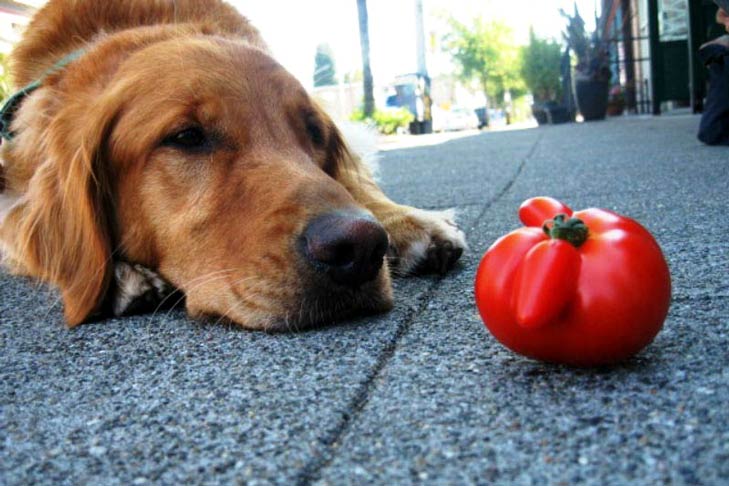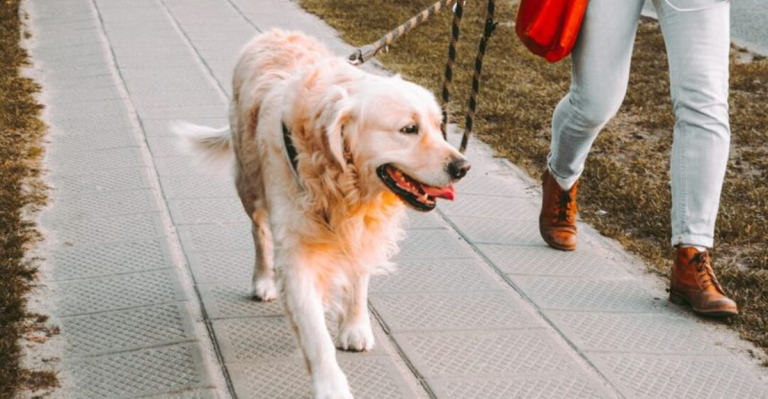12 Silent Signs Your Pet Is Overheating—And You’re Missing Them
Summer heat isn’t just tough on us—it can be dangerous for our furry friends too. Unlike humans, pets can’t tell us when they’re feeling too hot, and many animals instinctively hide signs of discomfort until it’s too late. That means pet owners need to stay extra vigilant, especially during hot, humid months when the risk of heatstroke skyrockets.
Unlike us, dogs and cats don’t sweat through their skin. They rely on panting and limited heat release through their paws and noses to regulate body temperature. When the mercury rises, that natural cooling system can quickly become overwhelmed. And once a pet begins to overheat, things can escalate fast—from fatigue and confusion to vomiting, collapse, and even death if not addressed.
The scariest part? Many signs of overheating are subtle and easily dismissed as everyday behavior. A little extra panting, some restlessness, or a skipped walk might not seem like a big deal—but they could be the early red flags of a serious problem.
Whether you’re headed to the dog park, hitting the hiking trail, or just lounging in your backyard, knowing what to look for is key. Below are 12 signs of pet overheating that too often go unnoticed—until it’s too late. Learning to spot them could make all the difference for your pet’s health and safety this summer.
1. Excessive Drooling Signals Temperature Trouble
While some breeds naturally drool more than others, sudden or unusual drooling is your pet’s body trying to cool down. This happens when their internal cooling systems kick into overdrive.
The saliva might be thicker than normal, and you’ll notice wet spots where your pet has been resting. Dogs particularly will leave drool trails or wet spots on furniture or floors.
If your typically tidy cat starts drooling or your normally drooly dog seems to be producing rivers, it’s time to move them to a cooler location immediately. This symptom often appears before more serious signs of heat distress.
2. Warm or Dry Nose and Gums Reveal Hidden Heat Stress
Contrary to popular belief, a healthy pet doesn’t always have a cold, wet nose. However, extremely warm, dry gums and nose together can indicate your pet is struggling to regulate their temperature.
Gently lift your pet’s lip and press your finger against their gums. They should feel moist and be pink in color. If they feel tacky or dry to the touch, dehydration may be setting in.
The nose should feel slightly cool or at least room temperature. When both nose and gums feel unusually warm and dry simultaneously, your pet might be overheating and needs immediate cooling assistance.
3. Glassy or Unfocused Eyes Warn of Worsening Conditions
Your pet’s eyes can tell you a lot about their health. Normally bright and alert, eyes that appear glazed over, unfocused, or unusually dilated may signal heat exhaustion.
You might notice your pet seems to be looking through you rather than at you. Their eyes may appear slightly sunken or have a distant, unfocused quality that differs from their normal gaze.
This change happens because blood vessels in the brain begin to respond to overheating. If you notice this eye change along with other symptoms, it’s a serious warning sign that your pet needs immediate cooling and possibly emergency veterinary care.
4. Reluctance to Move or Walk Shows Silent Suffering
An energetic pet suddenly becoming a couch potato on a hot day isn’t just being lazy. When animals overheat, they instinctively try to conserve energy by minimizing movement.
You might notice your dog refusing to continue a walk or your cat staying in one spot for hours. They may resist when you try to encourage them to move, which is very different from normal tired behavior.
This reluctance happens because movement generates more internal heat. If your normally active companion suddenly acts like moving is a tremendous effort during warm weather, take immediate steps to cool them down and assess for other overheating symptoms.
5. Uncharacteristic Restlessness Reveals Discomfort
Sometimes overheating manifests as the opposite of lethargy—your pet might seem unable to get comfortable. They’ll pace, change positions frequently, or constantly seek new resting spots.
This behavior stems from your pet’s desperate attempt to find relief from their rising body temperature. You might notice them moving from tile to carpet, or constantly getting up and lying back down in different positions.
Pay special attention if this restlessness is accompanied by heavy breathing. When your normally calm cat suddenly can’t settle down or your relaxed dog keeps repositioning during hot weather, it’s nature’s way of signaling something’s wrong with their internal temperature regulation.
6. Rapid or Irregular Heartbeat Indicates Internal Distress
Your pet’s heart works overtime when they’re overheating, trying to circulate blood to cool their body. Place your hand on your pet’s chest behind their left elbow to feel their heartbeat.
A normal resting heart rate for dogs ranges from 60-140 beats per minute depending on size (smaller dogs have faster hearts). For cats, 140-220 beats per minute is typical. During overheating, these rates can dramatically increase.
The rhythm might also feel irregular or pounding. This cardiovascular stress is particularly dangerous for older pets or those with existing heart conditions and requires immediate cooling measures and possibly emergency veterinary attention.
7. Increased Panting Without Activity Signals Temperature Struggles
Panting is normal after exercise or in warm weather, but excessive panting while resting is concerning. Your pet is desperately trying to cool down through evaporation from their tongue and respiratory tract.
Watch for panting that seems disproportionate to recent activity levels. If your dog is panting heavily after just sitting in the backyard or your cat (who rarely pants) starts doing so, take notice immediately.
The panting may also sound different—more labored, faster, or with a rasping quality. This symptom is often the first visible sign of heat stress and shouldn’t be dismissed as normal behavior, especially when the weather is warm.
8. Vomiting or Diarrhea Emerge as Body Systems Falter
When overheating progresses, your pet’s digestive system can be severely affected. Heat stress diverts blood flow away from the stomach and intestines to vital organs, causing gastrointestinal upset.
The vomit might contain unusual foam or bile, while diarrhea may appear suddenly without dietary changes. These symptoms can accelerate dehydration, making the overheating situation even more dangerous.
If your pet shows these digestive issues during hot weather or after being in the heat, don’t assume it’s just something they ate. Combined with other overheating signs, gastrointestinal problems indicate your pet needs immediate cooling and veterinary attention.
9. Staggering or Loss of Coordination Shows Neurological Effects
Heat affects your pet’s brain and nervous system. You might notice your normally graceful cat stumbling or your coordinated dog suddenly bumping into furniture or walking with an unsteady gait.
This wobbliness occurs because high body temperatures interfere with normal brain function. Your pet might appear disoriented, walk in circles, or seem unable to navigate familiar spaces.
This symptom is particularly alarming as it indicates advanced heat stress affecting the brain. If you notice your pet struggling with balance or coordination on a hot day, this is a medical emergency requiring immediate cooling measures and veterinary care.
10. Seizures or Collapse Signal Critical Emergency
These severe symptoms represent a life-threatening heat emergency. Seizures may appear as muscle tremors, rigid limbs, or full-body convulsions, while collapse means your pet suddenly falls and can’t get up.
Both indicate that your pet’s brain and body systems are failing due to extreme overheating. Even pets with no history of seizures can experience them during severe heat stress.
Don’t wait or watch if these symptoms occur—begin cooling immediately by moving to shade, applying cool (not cold) water to their body, and rushing to an emergency vet. These symptoms represent heat stroke, which can cause permanent organ damage or death without immediate intervention.
11. Lying Down and Refusing to Get Up Shows Severe Fatigue
When your pet plops down during a walk and absolutely refuses to continue, it’s not stubbornness—it’s self-preservation. Their body is telling them that continuing would dangerously raise their temperature.
You might notice they choose unusual places to lie down, like directly on cool surfaces. They may resist even gentle encouragement to move, which differs from normal tired behavior.
This complete shutdown is your pet’s last-ditch effort to prevent further temperature rise. If this happens, don’t force them to walk—instead, find shade immediately, offer water, and if possible, arrange transportation home where you can properly cool them.
12. Dark Urine or No Urine Reveals Dangerous Dehydration
Monitoring your pet’s bathroom habits might seem strange, but urine changes can signal dangerous overheating. Normal pet urine should be light yellow—dark yellow, orange-tinged, or very small amounts indicate dehydration.
Even more concerning is if your pet tries to urinate but produces nothing, which could signal kidney function problems from heat stress. You might notice your pet visiting their usual bathroom spot but producing little or nothing.
Dehydration compounds overheating problems by reducing your pet’s ability to cool themselves. If you notice urine changes along with other symptoms, offer small amounts of water frequently and seek veterinary care promptly.


















